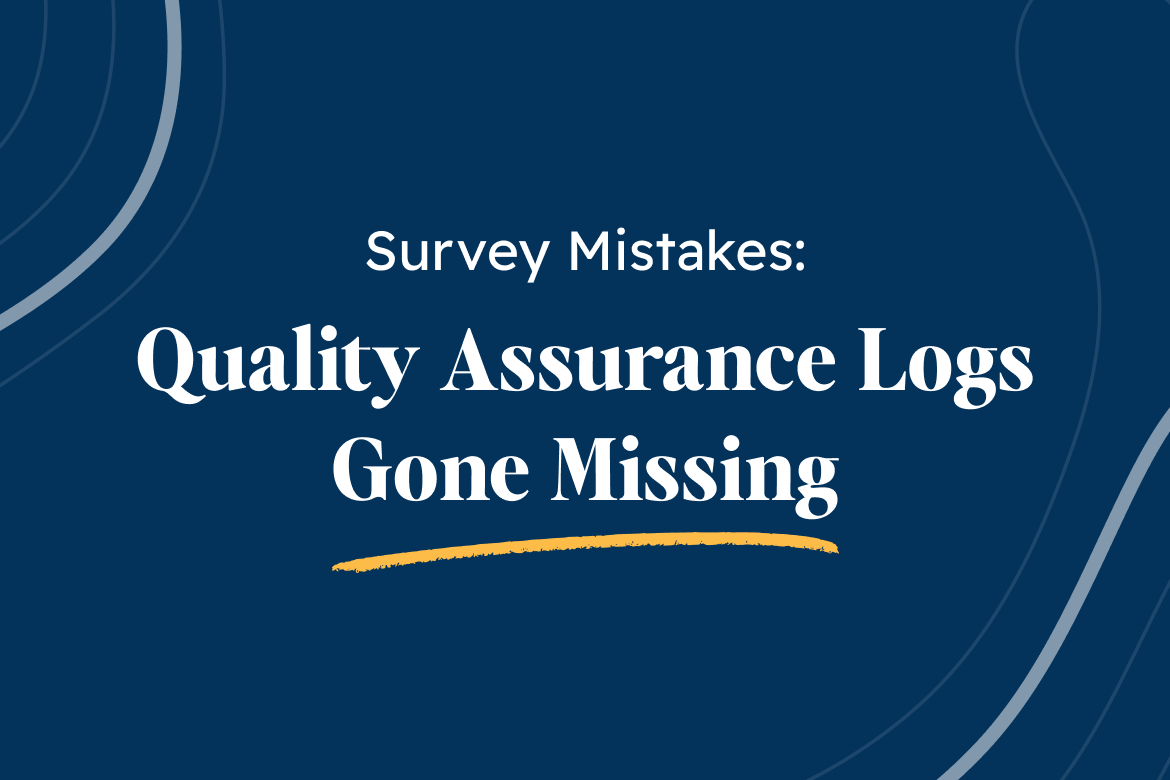Want to pass your next accreditation survey with flying colors? It’s possible, by avoiding some of the most common accreditation survey red flags.
Surglogs recently hosted a webinar with expert guest speaker Dawn Q. Onofrio RN, MSA, CASC, CNOR, CAIP, where she outlined five common mistakes found when performing an accreditation survey. Dawn has served as an accreditation surveyor for 23 years, and over the years, has encountered a few deficiencies in survey preparedness that come up more often than not.
The first mistake identified was “Missing or Incomplete Quality Assurance Logs”. She notes that there are several documentation storage methods, with Surglogs being one of the most commonly used methods in the past few years, but even with the best platforms in place, mistakes can happen.
Read on to discover the double-checks you’ll want to put in place at your facility to avoid these common logging mishaps.
Double-Check Your Logs
Crash Cart Checks
When checking if your facility has the correct emergency equipment, medications and supplies readily, consider the many layers of Crash Cart Checks. For example, Dawn notes that several times, each year, she will find facilities that are not including expired batteries or battery checks in their Crash Cart documentation. She’ll often find these missing for Laryngoscope handles, which can lead not just to a conditional finding, if you’re Medicare certified, but also to an IJ. If you can’t intubate a patient or if you can’t get your Laryngoscope handles to work in an emergency situation, then that can potentially be a very serious finding in an accreditation survey.
Refrigerator, Freezer, and Warmer Checks
As far as temperature goes, Dawn is looking for continuous monitoring, ideally an automated reading via Wi-Fi connection that can be recorded to a computer, and directly into the Surglogs platform. It’s crucial to record the minimum and maximum temperature since the last reading, so that you can always be sure that the temperature has not dropped below or gone above the acceptable range. If you have fluids, like IV fluids, in a warmer, these are considered medications that also need to be continuously monitored in a separate log, not simply by the reading on the warmer itself.
Glucometers/Urine Pregnancy Results
During this check, the most common issue occurs when the facility is not following the IFU. Dawn recommends making sure that the person(s) in charge are familiar with 1) the inserts that come in the package 2) the book that comes with the glucometer and 3) the insert that comes with the controls. Additionally, make sure you are following the IFUs for how to perform the controls, when to perform the controls, and how to clean the unit for the glucometer. Once again, Dawn sees mistakes happen in documentation when somebody hasn’t bothered to read the inserts.
The Malignant Hypothermia, or MH Cart
Dawn notes that facilities cannot share the doses for your MH medication, so you want to make sure you are meeting the national standard, confirmed by the Malignant Hypertermia Association. Furthermore, depending on medication type, you should have all 36 doses of Dantrolene or at least 3 doses of Ryanodex present on the cart. The Malignant Hypothermia poster should be current (2019 or later) and posted anywhere MH may occur, including the recovery room, procedure room, and ORs.
Medication and Supply Expirations
Ensure that you check all supply carts, including those belonging to vendors, as these often contain implants. It is ultimately the responsibility of the organization to ensure they are monitored and to remove expired items.
OR and PR Checks
Speaking of OR and PR checks, another common problem occurs with the humidity, temperature, and pressure of these rooms. If you’re supposed to have positive or negative pressure in a space, make sure that is indeed the pressure that you have, and of course, record that in the same way you do temperature and humidity. This doesn’t necessarily need to be recorded every day, but once a week or once a month, based on your facility’s policy. A surveyor will indeed check this documentation and make sure that the correct pressures were are present at the time of survey and in your logs. Ensure that the pass-through windows between the decontamination and sterilization areas remain closed. Leaving these windows open will affect the pressures and may cause the pressure in one or both rooms to become the opposite of what is required, or for them to become neutral relative to each other.
Download the eBook with the Most Common Survey Mistakes
We will handle your request in accordance with our Privacy Policy
How to Prevent Mistakes in Documents and Logs
So what are the best ways to ensure your logs and documents are recorded with utmost accuracy?
Dawn’s bonus tip for all facilities is to keep and READ your current Standards Manual, as it truly is your roadmap to success. Recordkeeping requirements are well documented in the standards manual. It is an open book test.
Additionally, ensure you are maintaining records each year, and storing them for the past three years, or since your last survey, as that will help you meet the surveyor’s needs and standards.
Surglogs ensures facilities like yours are survey-ready 365 per year with the record-keeping processes you need, all in a digital and easy-to-use platform. For more information, visit surglogs.com.


